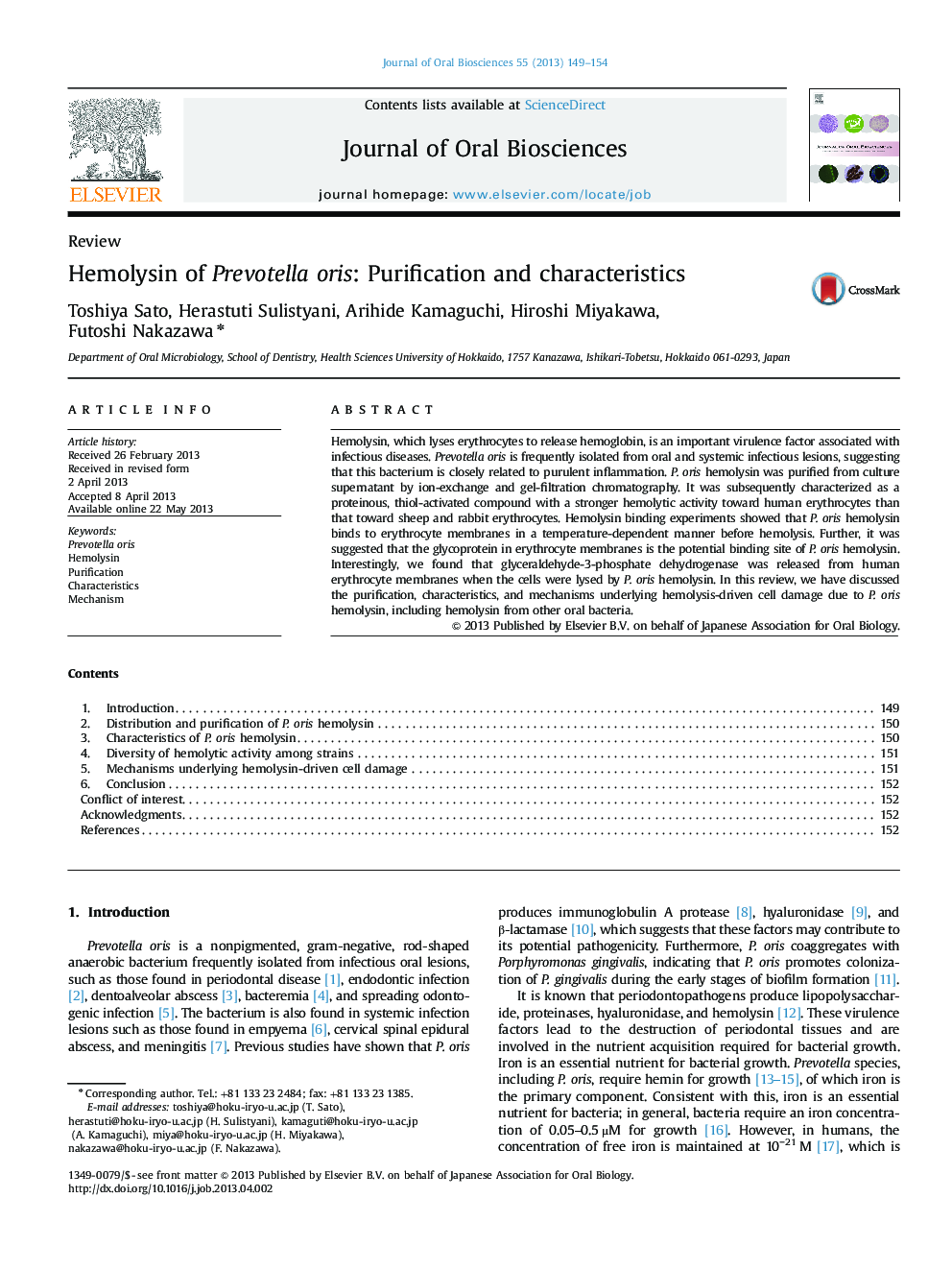| Article ID | Journal | Published Year | Pages | File Type |
|---|---|---|---|---|
| 2776891 | Journal of Oral Biosciences | 2013 | 6 Pages |
Hemolysin, which lyses erythrocytes to release hemoglobin, is an important virulence factor associated with infectious diseases. Prevotella oris is frequently isolated from oral and systemic infectious lesions, suggesting that this bacterium is closely related to purulent inflammation. P. oris hemolysin was purified from culture supernatant by ion-exchange and gel-filtration chromatography. It was subsequently characterized as a proteinous, thiol-activated compound with a stronger hemolytic activity toward human erythrocytes than that toward sheep and rabbit erythrocytes. Hemolysin binding experiments showed that P. oris hemolysin binds to erythrocyte membranes in a temperature-dependent manner before hemolysis. Further, it was suggested that the glycoprotein in erythrocyte membranes is the potential binding site of P. oris hemolysin. Interestingly, we found that glyceraldehyde-3-phosphate dehydrogenase was released from human erythrocyte membranes when the cells were lysed by P. oris hemolysin. In this review, we have discussed the purification, characteristics, and mechanisms underlying hemolysis-driven cell damage due to P. oris hemolysin, including hemolysin from other oral bacteria.
